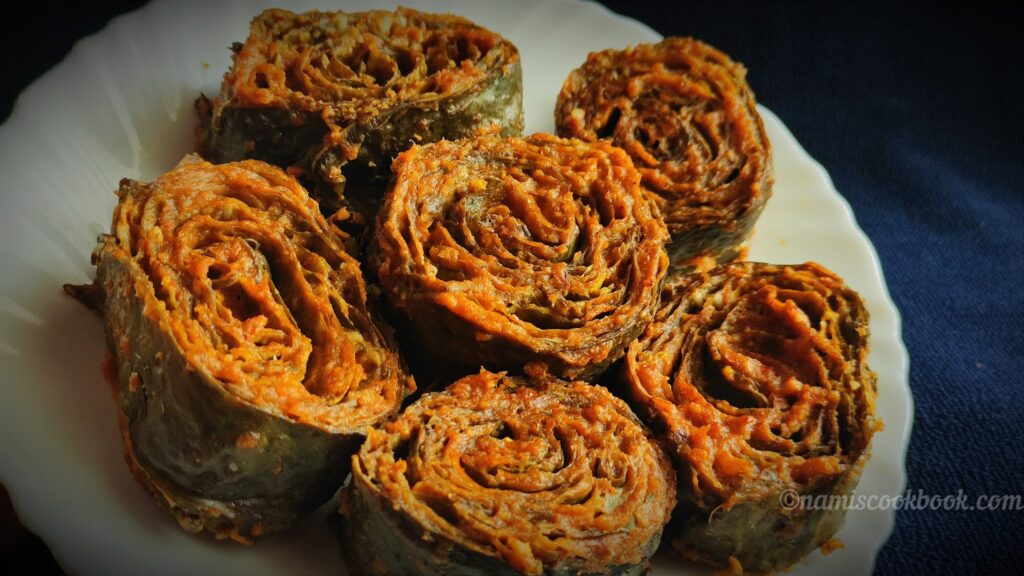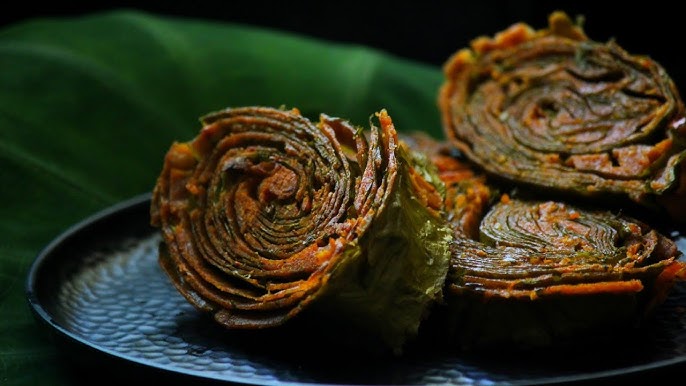
Goan Hindu cuisine offers a treasure trove of seasonal specialties, and Pathrado stands out as a cherished monsoon-time delicacy. Made using colocasia leaves (taro leaves) and a spicy rice-based masala, this traditional dish embodies the resourcefulness and depth of flavor in Konkani cooking. Families across Goa look forward to preparing Pathrado during the rainy season, when colocasia leaves grow abundantly.
What is Pathrado?
Pathrado, also known as Alu Vadi in Maharashtra, is a steamed savory roll made with layers of colocasia leaves smeared with a tangy, spicy rice and coconut paste. Once layered and rolled, it is steamed until tender and then either eaten as is or shallow-fried for added texture. The word “Pathra” comes from the Sanskrit word “patra,” meaning leaf.
Goan Hindu households, especially in the Saraswat Brahmin community, treat Pathrado not just as food but as a seasonal ritual. The dish is closely tied to the monsoon, celebrated for its earthy, bold flavors and its connection to nature’s cycle.
Ingredients that Define the Dish
Cooks prepare the masala using rice, grated coconut, tamarind, jaggery, and a mix of dry spices like red chilies, cumin, coriander seeds, and turmeric. Some variations include urad dal (black gram) or toor dal (split pigeon peas) for added protein and depth.
Colocasia leaves are the heart of the dish. Locals choose young, tender leaves with minimal itchiness (a common issue with colocasia) and remove thick veins to ensure the rolls steam evenly.
The Making of Pathrado
Preparing Pathrado requires patience and precision. After soaking and grinding the masala, the cook lays out a colocasia leaf with its vein side up. They spread a thin layer of the masala, then place another leaf on top, repeating the process for three to five layers. Once the stack is ready, it’s rolled tightly from bottom to top, much like a Swiss roll.
These rolls are steamed for 20–30 minutes until firm. Some households serve them hot with coconut oil or a sprinkle of fresh coconut, while others slice and fry the rolls in coconut oil to enhance their crispiness.
A Dish Rooted in Tradition
Pathrado reflects the Goan Hindu community’s deep connection with nature and seasonality. Since colocasia thrives during the monsoon, the dish not only celebrates the rains but also reinforces sustainable eating practices. Many families associate its preparation with religious observances or festivals, sharing the dish with neighbors and guests as an act of love and hospitality.
Moreover, Pathrado is considered nutritious—rich in iron, fiber, and plant-based protein, especially when combined with lentils in the masala paste.
Pathrado in Modern Kitchens
Today, while some urban homes may turn to ready-made masala or frozen leaves, the essence of Pathrado remains untouched. Young Goans are reviving interest in this heirloom recipe, sharing it through social media and home food businesses.
By keeping the tradition of Pathrado alive, Goan Hindu families continue to honor their culinary heritage—one leaf at a time.


